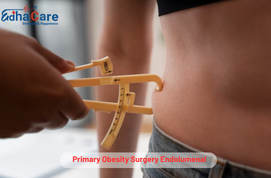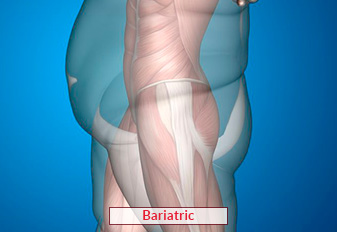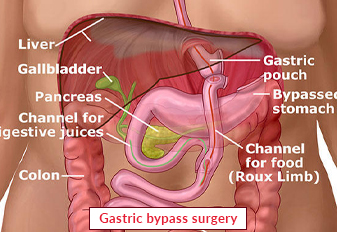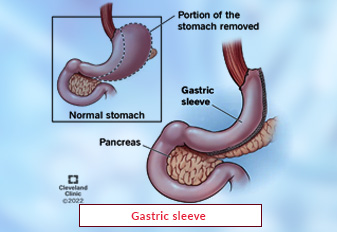Primary Obesity Surgery Endolumenal

Primary Surgery for Obesity A very minimally invasive fat-loss technique called endoluminal (POSE) seeks to decrease stomach size and encourage loss of weight without requiring exterior incisions. An endoscope, a thin flexible tube with a digital camera and other gadgets attached, is used for the whole procedure, which is carried through one's mouth and esophagus. Small incisions are created in the lining of the stomach throughout the surgery, and unique tools are utilized to produce folding or plications that reduce the stomach's capacity for holding food and cause a sense of fullness with smaller amounts of food. POSE requires less recovery time than conventional bariatric surgery and is usually done as an outpatient procedure. Despite being thought of as less intrusive, the effectiveness may differ from person to person and it carries risks similar to any surgical procedure.
Book an AppointmentAbout Primary Obesity Surgery Endolumenal
Primary Obesity Endolumenal Symptoms : Primary Surgery for Obesity Since endoluminal surgery (POSE) has the goal of inducing a reduction in weight instead of dealing with symptoms, it usually does not result in symptoms. However, because of the endoscope's passage around the surgery, individuals may feel a little discomfort or stiffness in their throat or esophagus afterward. Additionally, when they acclimate to the procedure's decreased stomach capacity, somebody might experience brief alterations in their eating or digesting habits. Patients have to strictly adhere to the post-operative instructions provided by their doctor or surgeon in order to reduce discomfort and ensure the best potential outcome. Patients should get in touch with their physician right once for evaluation and treatment if any worrisome symptoms, such as severe pain, difficulties swallowing, or symptoms of an infection, appear shortly after Primary Obesity Surgery Endoluminal (POSE).
Primary Obesity Endolumenal causes : Primary Obesity Surgery Endolumenal, or POSE, focusses more on causing a reduction in weight than it focuses on treating individual obese-related reasons. The procedure itself, however, doesn't treat the root causes of obesity, such as lifestyle choices, amounts of physical activity, inherited traits, or metabolic disorders. Rather, POSE functions by constricting the stomach and encouraging a sensation of feeling satisfied with smaller meals, which in turn results in a reduction in caloric intake and consequent loss of weight. Although POSE may assist people in achieving their weight reduction objectives, in order for greatest long-term success, lifestyle variables and changes in behavior must be addressed in addition to the method.
Primary Obesity Endolumenal Remedies : The goal of Primary Obesity Surgery Endolumenal (POSE) treatments is to promote long-term success and weight loss. Patients are advised to practice portion control and maintain a balanced diet full of nutritious foods, lean proteins, and veggies. Frequent physical activity promotes general health improvement and helps with weight management. This includes strength training and aerobic exercise. It is essential to address the psychological and emotional aspects of eating patterns through support groups or counseling. Scheduling routine follow-up visits with medical professionals aids in tracking advancement and addressing issues. Getting help from supportive services, such dietary counseling, might offer more direction. A holistic strategy that incorporates dietary adjustments, physical activity, behavioral adjustments, and continuous medical guidance is essential to maximize POSE advantages and get long-term weight reduction results.
Procedure of Primary Obesity Surgery Endolumenal
A minimally invasive procedure called Primary Obesity Surgery Endolumenal (POSE) is intended to help obese patients lose weight. An outline of the POSE process is provided below:
Preoperative Assessment: Before to the Primary Obesity Surgery Endolumenal (POSE) surgery, patients go through an extensive exam that might involve radiology inquiries and blood tests in in addition to physical examination and an overview of their medical records. The assessment detects any possible risk factors or restrictions and helps in assessing the patient's suitability for surgery.
Anesthesia Administration: To guarantee patients satisfaction and security during the procedure. POSE will be carried out under a general anesthesia. The anesthesia medication is administered by an anesthesiologist, who additionally causes unconsciousness so that the person receiving treatment can stay motionless and pain-free throughout the entire procedure.
Endoscopic Access: An endoscope, a thin tube with flexibility containing a video camera and special tools, is utilized to execute the POSE operation in its entirety. Without creating any external cuts, the endoscope is passed into the roof of the mouth and guided down the esophagus and into the stomach to view the interior tissues.
Gastric Plication: The doctor uses specific instruments for creating folding or Applications in the lining of the stomach after placing the endoscope inside the cavity of the stomach. These folds successfully reduce the stomach's volume, which restricts the quantity of food it can hold and promotes feelings of fullness after smaller amounts of food. Depending on the patient's anatomy and losing weight objectives, the quantity and location of plications may change.
Suturing or Tissue Anchoring: Sutures, clips, or other tissue anchoring devices are used to hold the folds in place once the intended gastric plication is achieved. This guarantees long-term weight loss results and preserves the plications' ability to reduce stomach volume.
Completion and Recovery: The endoscope is gently removed from the patient's digestive tract following the gastric plication procedure. Once the patient is stable and completely awake, they are observed in a recovery area. Most patients are able to go home the same day as the treatment, while some may need to stay overnight, depending on their specific situation.
Postoperative Care and Follow-up: Following POSE, patients receive postoperative instructions regarding diet, activity, and medications to support recovery and optimize outcomes. They are scheduled for follow-up appointments with their healthcare provider to monitor progress, address any concerns or complications, and provide ongoing support for weight loss maintenance.
Require Assistance?
Get A Quick Callback From Our Healthcare Experts






